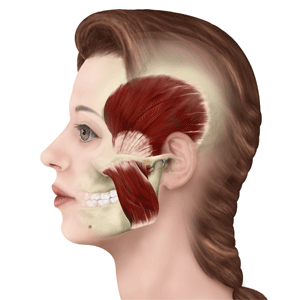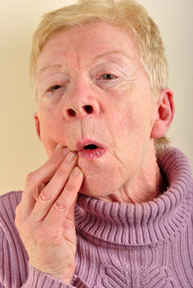
Diplomate American Board of Orofacial Pain
9615 Brighton Way, Suite 323
Beverly Hills, CA 90210
888.981.8981
 What is a headache?
What is a headache?
A headache is an ache or pain occurring anywhere in the face, neck or head. Headache pain is experienced through pain-sensitive structures around the head and neck including blood vessels, nerves, muscles and tissues including the eyes, ears and sinuses. Headaches can range across the intensity spectrum from mild, tolerable pain to severe pain that prohibits daily activities. Headaches are one of the most commonly experienced causes of pain. They can be occasional, recurrent or chronic in frequency. The International Classification of Headache Disorders (ICHD) is published by the International Headache Society to classify and diagnose types of headaches. According to this classification system, there are four primary types of headaches: migraines, tension-type headaches, cluster headaches and other headaches sensed in the cranial nerves. Different types of headaches may respond to different types of treatments as they originate by various causes.
Migraines
A migraine is a moderate to severe headache often accompanied
by nausea, vomiting, increased sensitivity to sound, and increased
sensitivity to light. The severity, duration and frequency of migraine
pain vary from one attack to another in the same person.
There are four possible phases of a migraine, and all are not
necessarily experienced. The first phase, called the prodrome, may occur
hours or days before the migraine, and consists of an altered mood
excessively sleepiness, stiff muscles and other symptoms. The second
phase, called an aura, which may immediately precede the attack, occurs
in 20 to 30 percent of migraine sufferers. An aura can be motor or
sensory, including a disturbance of vision such as flashes of light or
zigzag lines, or a feeling of pins and needles in the hand, arm, face
and mouth. The third phase of a migraine is the pain or headache phase.
The pain may occur on one side of the head or both and usually lasts
from 4 hours to 3 days. The final phase of a migraine, a postdrome, may
occur for some patients. It may include a sore feeling where the
migraine pain was accompanied by feelings of tiredness, weakness and
cognitive difficulties. Six percent of men and 18 percent of women are
estimated to experience a migraine headache in their lifetime.
Tension-type headaches
These are the most commonly occurring type of primary headache. Up to nine out of ten adults will have or have had a tension-type headache in their lifetime. A tension-type headache is experienced as pain of varying intensity in the head, face and neck, often described as a feeling of tightness or pressure.
Cluster headaches
This rare primary headache type only effects 0.1% of the population, most commonly men in their late 20's. The piercing pain is felt in the eye region, typically on only one side of the face without changing sides. A cluster headache usually lasts between 30 and 90 minutes, but can occur for up to three hours. They are often recurrent, happening regularly at the same time of day or night. Many people who suffer from cluster headaches report between one to three headaches per day during a period.
If you suffer from frequent headaches, finding out the type of headache causing the majority of symptoms is a critical part of treating the underlying causes of the pain. Learn about the major causes, symptoms and treatments for various headache types here, and consult Dr. Hirschinger before starting a treatment plan. What is Myofascial Pain?
What is Myofascial Pain?
Chronic myofascial pain (CMP) is a chronic pain disease characterized by trigger points in the musculature causing pain in distinct areas of the body. Pain symptoms of CMP can be severe and debilitating. While much of the underlying mechanics of myofascial pain is not clearly understood, research suggests that symptoms are derived from the existence of trigger points within muscles, which are activated by injury or repetitive strain to muscles. It is generally understood that while one trigger point may be responsible for an experience of myofascial pain, it is more commonly a network of several trigger points that contribute to pain in a given region.
The defining clinical definition of myofascial pain is an active pain trigger point, experienced as a focused point of tenderness within a muscle. Pain associated with myofascial pain is usually experienced as dull aching of a muscle and the associated muscle group. Referred pain, or pain experienced at a site adjacent or not near the originating trigger point, is also common.
An estimated 44 million Americans suffer from myofascial pain problems, and trigger points have been associated with an estimated 30 percent of pain problems in American pain complaints. Research suggests that myofascial pain triggers are a potential component of tension-type headaches, back pain, postural pain and other pain conditions.
 Further studies suggest that most individuals have trigger points within their musculature, however for 45 percent of women and 55 percent of men, these trigger points are asymptomatic.
Further studies suggest that most individuals have trigger points within their musculature, however for 45 percent of women and 55 percent of men, these trigger points are asymptomatic. Chronic myofascial pain symptoms can be mistaken for a large number of other disorders, so a thorough physical examination is required for proper diagnosis of this largely not understood disease.
Chronic myofascial pain is a complex but manageable disease. Professional attention can help narrow down the causes of chronic pain and make a positive diagnosis of CMP based on physical examination and additional procedures to rule out alternative sources of a patient's pain symptoms. Several treatment options, including physical therapy, oral appliances, and medications, can be leveraged as part of a comprehensive management plan.
The jaw movement animation was developed by a medical illustrator under the guidance of Dr. Hirschinger.
 What is Neuropathic Pain?
What is Neuropathic Pain?
Neuropathic pain disorders are a set of pain conditions resulting from disorder or injury to the nervous system. The human nervous system is divided into two general parts: the central nervous system, comprising the brain and spinal cord, and the peripheral nervous system, including nerves that go to the limbs, trunk, face and all outlying areas of the body. When nerves of the peripheral system sense pain from mechanical, chemical or thermal sensations, they relay the sensation to the central nervous system for processing. Additionally, the spine and brain command a network a nerves conducting sensation along the back, neck, head and face. Damage to nerves of the peripheral or central nervous system can cause pain signals to be sent to the brain, which may result in the chronic pain condition known as neuropathic pain.Neuropathic pain may manifest as continuous or episodic, with episodic attacks described as an electric shock and continuous attacks often experienced as feelings of prolonged aching, burning, sensitivity or coldness. Neuropathic orofacial pain conditions refer to those with symptoms that primarily affect a patient's mouth and face. Orofacial means of the mouth or face.
Trigeminal Neuralgia
The most common orofacial neuropathic pain condition is trigeminal neuralgia, a disorder of the trigeminal or 5th cranial nerve, which causes sudden, severe shock-like pain in or around the face. Episodes typically last several seconds, though they can last up to two minutes, and may repeat in succession and throughout the day.
The trigeminal nerve is one of 12 pairs of cranial nerves, the nerves that emerge directly from the brain. The trigeminal nerve has three branches reaching throughout the face and oral cavity. The upper branch is responsible for sensations for the scalp, forehead and front of the head. The middle branch is responsible for sensations in the cheek, upper jaw, top lip, top teeth and gums, and side of the nose. The lower branch is responsible for sensations of the lower jaw, lower teeth and gums, and bottom lip. More than one branch may be affected by a disorder of the nerve, and sufferers may experience pain on both sides of the head and neck, although typically only one side is affected by an episode at a time.
There are other conditions that affect nerves of the central nervous system and cause orofacial neuropathies, such as glossopharyngeal neuralgia, occipital neuralgia, vagal neuralgia and superior laryngeal neuralgia. These orofacial neuropathies are less common, though they are thought to be caused in the same way as trigeminal neuralgia, which is a pressure applied, often by a blood vessel, to the associated nerve as it exits the brain.
An episodic attack of trigeminal neuralgia may be triggered by contact with any of the parts of the face, jaw, mouth and head mentioned above. The condition may become worse over time. Pain may at first be experienced in a small area of the face, later spreading. Episodes can occur for some patients for days, weeks or months and then subside for months or years. If the condition worsens, time between episodes may become shorter and less frequent.
Trigeminal neuralgia has been divided into two types. In Type 1 trigeminal neuralgia, more than half of the pain experienced is shock-like pain described as sudden, sharp, burning or stabbing. In Type 2 trigeminal neuralgia, more than half of the pain experienced is constant pain that is aching, burning or coldness, numbness, or a "pins and needles" sensation. Type 2 trigeminal neuralgia is also known as pre-trigeminal neuralgia as it eventually develops into the classic form of trigeminal neuralgia characterized by intermittent shock episodes.
Atypical Odontalgia
Also among the more common forms of neuropathic orofacial pain is atypical odontalgia. This condition, also known as phantom tooth pain, may follow a dental procedure such as a root canal or an extraction, and is experienced as a pain like a toothache with no actual problem in the tooth.
Oral Nerve Injury
Neuropathy to the inferior alveolar nerve or the lingual nerve occurs most often as a complication of a dental or medical procedure. Tooth extraction, usually of the wisdom teeth, is the leading cause of lingual and inferior alveolar nerve damage. It may also occur as a result of anesthetic injections for oral procedures. The result is pain and burning sensation, numbness or tingling of the tongue, mouth or lower lip.
Complex Regional Pain Syndrome
Complex regional pain syndrome (CRPS), also called causalgia or Reflex Sympathetic Dystrophy Syndrome, is a rare chronic pain condition originating from a disorder of the nervous system. CRPS can affect the craniofacial region, though is more common in the arms and legs. CRPS I is associated with tissue injury and CRPS II is associated with nerve injury. The pain is described as a continuous burning pain and may be accompanied by changes in skin temperature, color and texture, increased skin sensitivity and swelling and stiffness.





